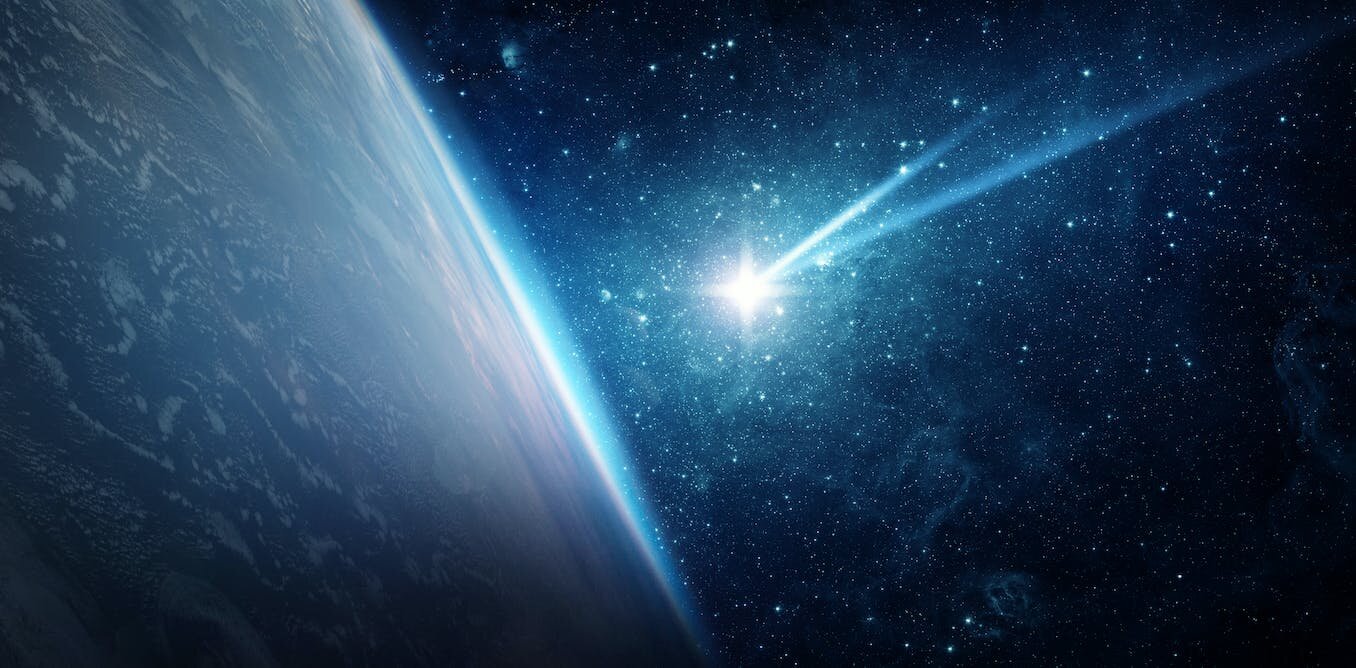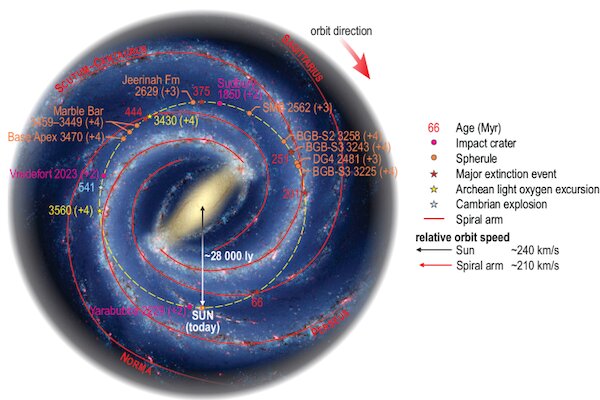The study of the radioisotope composition of the rocks of the earth’s crust has shown that it fluctuates with a periodicity of about 200 million years. This coincides with the duration of the rotation of our star around the center of the Galaxy and this is what affects the changes in the lithosphere of our planet.

Exploration of the Earth’s lithosphere
The Earth’s crust is constantly being updated. From the depths of our planet, the molten substance of the mantle moves to the surface, which solidifies, turning into a reliable soil for sedimentary rocks. Scientists have learned quite well how to determine the age by the decay of radioactive elements. It turned out that there are a lot of elements in it that came to Earth from Outer Space.
By applying Fourier transforms to the entire array of data on the age of rocks and their isotopic composition, it is possible to reconstruct the whole picture of how the influence of the cosmic environment on the Earth has changed over billions of years.
It turned out that in the formation of the earth’s crust there is a cyclicity with a period of about 200 million years. This figure is suspiciously similar to the period of rotation of our star around the supermassive black hole Sagittarius A*, which is located in the center of the Milky Way. This periodicity is especially noticeable in the earliest rocks older than 3 billion years.
What influences the formation of the Earth’s crust?
During one revolution of the Sun around the center of the Galaxy during the surrounding conditions are constantly changing. For example, the distance to the center of the Milky Way differs. But more importantly, the spiral arms of our star system rotate with a period of 250 million years.

As a result, our star system is constantly entering and exiting the sleeves. Because of this, the pressure of the interstellar medium changes. When it grows, the matter from the vicinity of the Solar System, including comets, gets into its inner parts more intensively.
They fly away at a speed of up to 52 km/s. This is much faster than those asteroids that come to us from the Asteroid Belt. Therefore, when they collide with the Earth, the pressure that occurs at the impact site is much greater. Microscopic crystals are formed in a slightly different way and scientists can trace these changes.
According to phys.org
Follow us on Twitter to get the most interesting space news in time
https://twitter.com/ust_magazine

